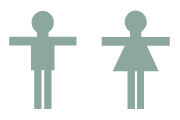
|
 Female genital mutilation a ‘human rights violation:’ Canadian gynaecologists Female genital mutilation a ‘human rights violation:’ Canadian gynaecologists
OTTAWA — The Society of Obstetricians and Gynaecologists of Canada is calling for a cultural change in attitudes toward female genital mutilation, a practice it calls a human rights violation.
The society has reaffirmed its stance on the practice in a new policy statement published in the February edition of the Journal of Obstetrics and Gynaecology Canada.
The clarification was necessary to ensure that all Canadian doctors know that the practice is illegal and “unacceptable” here.
“We want to raise awareness that there are more and more women we are seeing (with this procedure) because of immigration,” Dr. Margaret Burnett, chair of the society’s Social and Sexual Issues Committee, told Postmedia News.
“Cultural values and norms that promote (female genital mutilation) procedures must change to ensure that females are not confronted with intolerant environments and unnecessary procedures involving immediate and longer-term risks, complications and consequences,” Burnett said.
“There are no clear guidelines for health-care professionals in dealing with requests for (female genital mutilation) procedures or for providing culturally competent care for women who have already been subjected to (the procedure). The good news is we are working on these now.”
This group of women had the procedure when they were in their childhood or teenage years.
The society calls female genital mutilation, or cutting, a violation of the human rights of girls and women.
The UN defines female genital mutilation as any procedure that involves removing part or all of the external female genitalia, or another type of injury to female organs such as sewing together female genitalia for non-medical reasons.
“As women of reproductive age immigrate in great numbers to Canada, Canadian health professionals will likely be faced with more requests for procedures involving female genital cutting or for treatment due to a (female genital mutilation) procedure they were subjected to in the past,” said Dr. Vyta Senikas, acting executive vice-president of the Society of Obstetricians and Gynaecologists of Canada and a principal co-author of the policy statement.
“What these immigrant women need is access to culturally competent care in Canada.”
The Society of Obstetricians and Gynaecologists of Canada says the practice has no known health benefits and can lead to serious, immediate and life-threatening health risks. It is also harmful to a woman’s physical and psychological well-being.
According to the World Health Organization, in 2008, between 100 and 140 million girls and women in the world lived with female genital mutilation. The practice can be found in western, eastern and northeastern Africa, and some Asian and Middle Eastern countries.
With post-Second World War migration, it is also found within certain immigrant, refugee and asylum-seeker communities in Europe, Australia and North America, including Canada — where it is illegal.
In Canada, the women who have undergone this procedure have been mainly from Africa and countries which consider it a traditional rite of passage that can beautify women, prevent promiscuity and protect girls from rape, Dr. Burnett said.
Canadian doctors have been treating the symptoms that arise after the procedure, such as difficulty with childbirth and psychological trauma.
She said most of the women in Canada who have undergone the procedure — with some being refugees from war-torn countries —also have post-traumatic stress disorder.
Female genital mutilation is usually done in clandestine, sometimes illegal, circumstances using a knife, razor or scissors without anesthesia. The procedure is not reversible.
According to the society, the practice is rooted in traditional beliefs and values related to women’s sexuality “and the perceived need to control their sexual and reproductive capacity.”
There are four types: clitorectomy, excision, infibulations (sewing together of female genitalia) and other procedures, such as genital surgery and piercing for non-medical purposes.
The procedure varies according to the countries and ethnic groups within a country. It affects girls between four and 14 years old.
The society issued an official policy document against the practice in 1992 and reaffirmed its position this year, recognizing that “there are important controversies to resolve, particularly with respect to non-medical procedures (e.g. genital surgery, piercing, reinfibulation, etc.) that are considered to be “legal” and “acceptable” by some members of the Canadian public, but that are not required for medical reasons,” it said in statement.
(2012-02-22/nationalpost)
|





